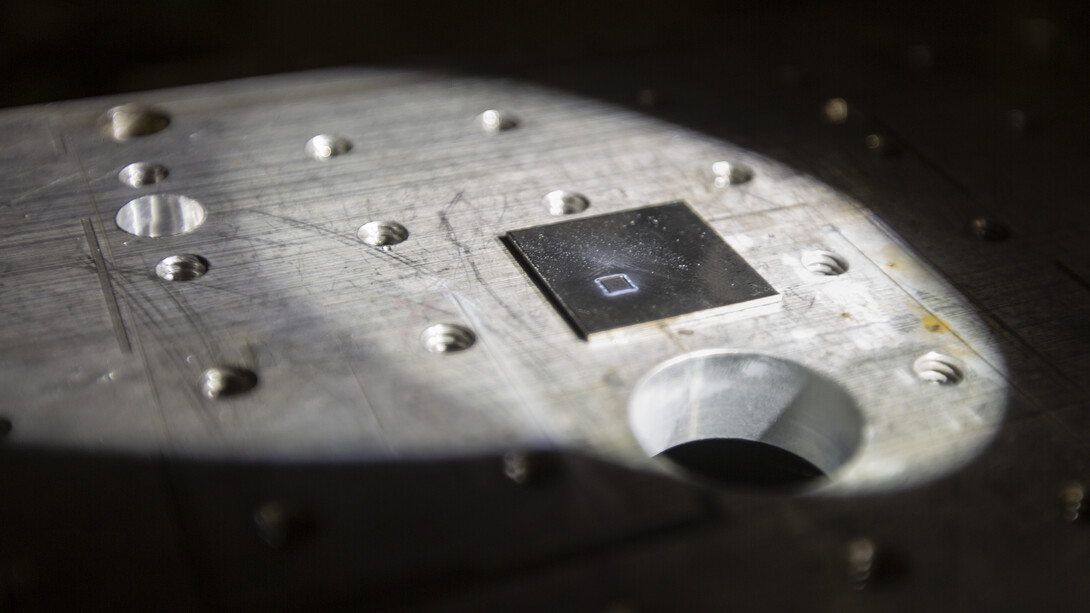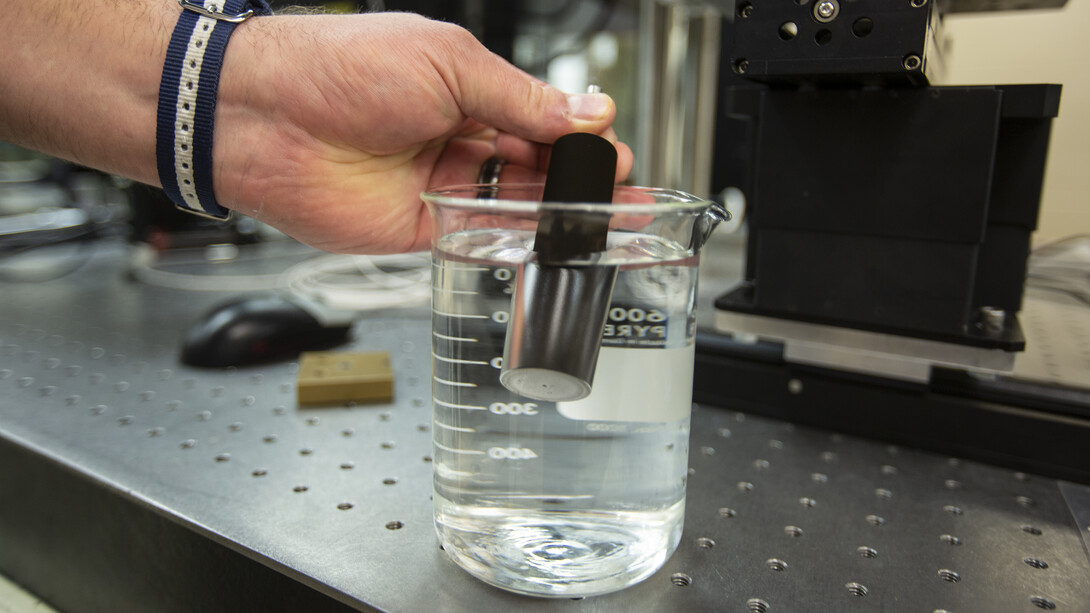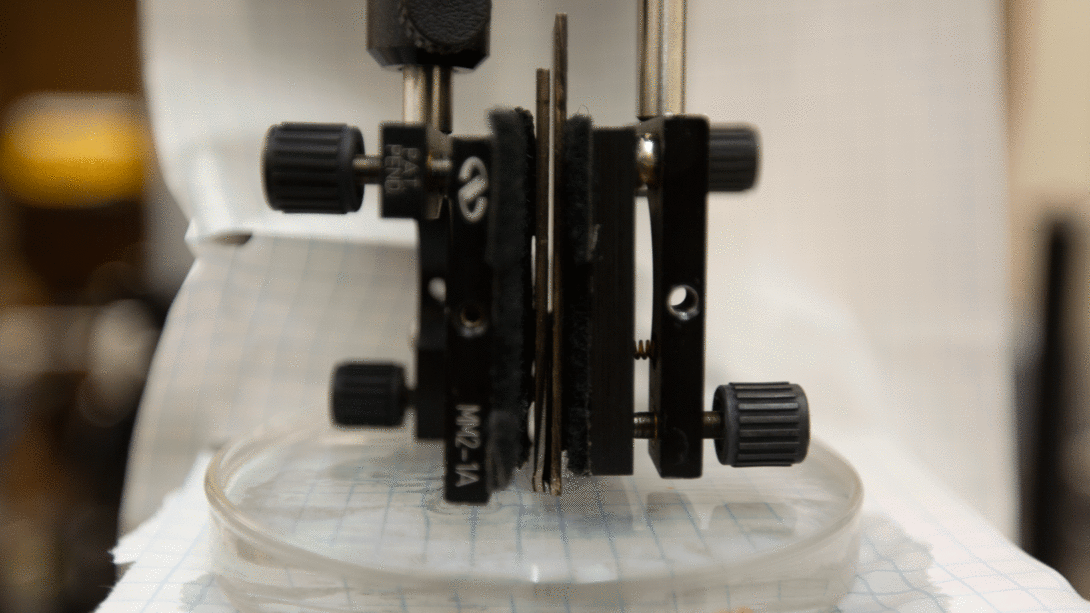
Honed by 450 million years of evolution, shark skin offers a near-perfect design for gliding effortlessly through water.
A University of Nebraska–Lincoln research team led by Dennis Alexander is working to translate that evolutionary advantage — and others crafted by Mother Nature — onto metal surfaces. Ultimately, the work will give metal the same unique properties, allowing it to be used for defense and industrial purposes.
“Our structures are very important to the military, Boeing and NASA,” said Alexander, Kingery Professor of Electrical and Computer Engineering. “We’re emphasizing these structures using these surfaces in harsh environments, but there isn’t any metal surface we can’t functionalize.”

His team uses extremely short-burst laser pulses — those lasting tiny fractions of a second — to alter just the very fringe of a metal surface. Altering the laser angle and other parameters creates surfaces that mimic nature.
By copying the microscopic structure of shark skin onto metal, the research team creates a super-hydrophilic, or water-wicking, material. This property reduces drag and could be used to create submersible craft that travel farther underwater using less power.
Nebraska’s laser-created surfaces also improve heat transfer, an important characteristic in many military and commercial systems.
Other natural surfaces studied by Alexander’s team include rose petals, beetles and moth eyes.
Rose petals are super-hydrophobic, causing rainwater to slide off in beads. Like their super-hydrophilic counterparts, super-hydrophobic surfaces reduce drag. Applications include medical supplies that repel liquids and can’t be contaminated by blood or other fluids, antibacterial metals for joint replacement, reducing ice buildup on traffic lights and power lines, and improving condenser heat exchangers, including those used to reclaim water in space.

Alexander’s team is working with NASA on improving the heat exchangers. The work has the potential to advance plans for deep-space travel, including missions to Mars.
Exoskeletons of beetles living in desert regions feature surfaces that — like shark skin — are super-hydrophilic. When metal surfaces that mimic the beetles are placed close to each other, they generate a pumpless wicking action that can draw fluid upward (see the animated gif below).
“The concept could be used in (developing) countries to pump water to the surface without electricity,” Alexander said. “Basically, it’s the same way Mother Nature does it in trees and plants.”

Designed to flit around at night and avoid detection by predators, moth eyes absorb a wide spectrum of light. By translating those surface properties onto metal, the team creates an anti-reflective metal that improves solar panel efficiency and makes stealth aircraft harder to track.
Alexander’s research is funded in part by the University of Nebraska’s National Strategic Research Institute and NASA.







